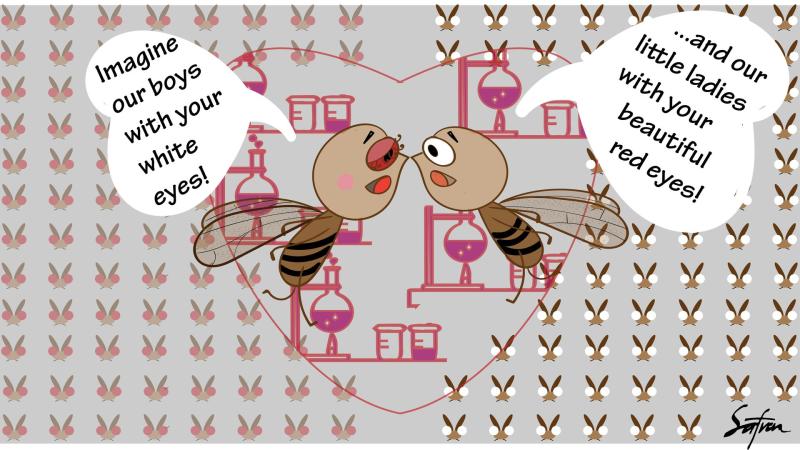
With a lifespan of just twelve days, the famous line, 'Live like there's no tomorrow', could be the title of a fruit fly's biography. Drosophila melanogaster, commonly known as the fruit fly, is an important 'model organism' used in biological experiments. A model organism is one that is easy to breed, can survive in laboratories and has an inherent biological advantage. For example, zebrafish is used to study internal anatomy because it is transparent.
Fruit flies find themselves a part of many experiments from modelling the development of tumour growths in cancer to studying immunity against viral infections. What makes this 3-millimetre-long insect the prefered choice of biologists?
We will need to travel back to 1910 to understand this. Thomas Hunt Morgan, a biologist at Columbia University, performed an experiment a century ago that would shape genetics as we know it today. Looking for a cheap and readily available organism, Morgan bred fruit flies for his purpose.
Fruit flies commonly have red eyes. When Morgan discovered a white-eyed fly among thousands of fruit flies he bred, he was intrigued. He then bred the white mutant male with a red-eyed female and found that in the following generation, the white-eyed fruit flies were male. He bred more generations and analysed them with magnifying glasses and simple microscopes. It became clear that whatever was controlling the eye colour had to be on the same chromosome as the one controlling sex. He went on to prove that chromosomes carry genes that transfer traits from parents to offspring.
Morgan couldn't have bred multiple generations of fruit flies quickly if they didn't have a short life cycle of 12 days. And if they didn't lay around 50 eggs at once, Morgan wouldn't have had substantial data.
A simple diet of a cornmeal and yeast mixture is enough to breed and maintain fruit flies. Only 3 millimetres long, fruit flies are small enough to be grouped in test tubes, yet large enough to be seen with the naked eye. This trait is especially important in genetic experiments that analyse their outward appearance. Besides, their chromosomes can be easily extracted from the saliva, and the genes can be easily manipulated. Morgan noticed the white-eyed males only because fruit flies are sexually dimorphic—the males and females are easily differentiable.
Since the fruit fly serves as an invaluable tool in biology, its entire genome was sequenced and published in 2000. Scientists found that fruit flies share nearly 60% of human genes! Hence, they are used to examine human diseases such as Huntington's disease and to test new drugs. Backed up by decades of research, the drosophila is very well understood and continues to be used to this day. All of this make fruit flies the apple of biologists' eye.





